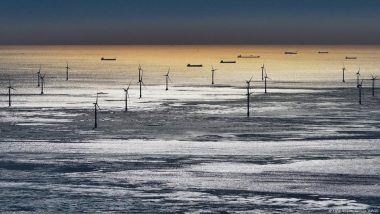China is building more wind and solar capacity than the rest of the world combined, a new study has shown.Nearly two-thirds of the world's big wind and solar energy production plants are in China, a research published on Thursday showed.
At present, China has 339 gigawatts (GW) of capacity under construction, including 159 GW of wind and 180 GW of solar, according to the report by Global Energy Monitor.
Also Read | Indians Travelled Close to 1,000 Cities Across 68 Countries Over the Year, Says Uber Report.
That is "nearly twice as much as the rest of the world combined," the US-based think tank said.
The figure is also much higher than the 2nd place United States, which is building a total of just 40 GW, the monitor said.
China's momentum puts the global aim to triple renewable capacity by the end of 2030 "well within reach" even without more hydropower, the study said, urging Beijing to lift its targets in climate pledges to the UN next year.
Reducing coal dependency
The Asian giant is the biggest emitter of the greenhouse gases that fuel climate change.
But China's increasing renewable capacity has driven coal's generation share to new lows
The country, which is the world’s second-largest economy, has vowed to bring carbon emissions to a peak by 2030 and to reach net zero by 2060.
China's mammoth renewable energy boom has some limitations and the national grid falls back on heavily polluting coal plants to tackle the rise in power demand.
The country is also dealing with how to transmit renewable energy generated in its remote northwestern regions to economic and population centers in the east.
However, China's combined wind and solar capacity is set to overtake coal this year, Global Energy Monitor's report said.
In May, China generated 53% of its electricity from coal, a record low for the country and down from 60% in May 2023, a separate analysis published Thursday by Carbon Brief showed.
A record 44% came from non-fossil fuel sources — suggesting that the nation's carbon emissions may have peaked last year if the trend continues — the analysis conducted by Lauri Myllyvirta, a senior fellow at Asia Society Policy Institute, pointed out.
dvv/sms (AFP, Reuters)
(The above story first appeared on LatestLY on Jul 11, 2024 12:40 PM IST. For more news and updates on politics, world, sports, entertainment and lifestyle, log on to our website latestly.com).













 Quickly
Quickly





















